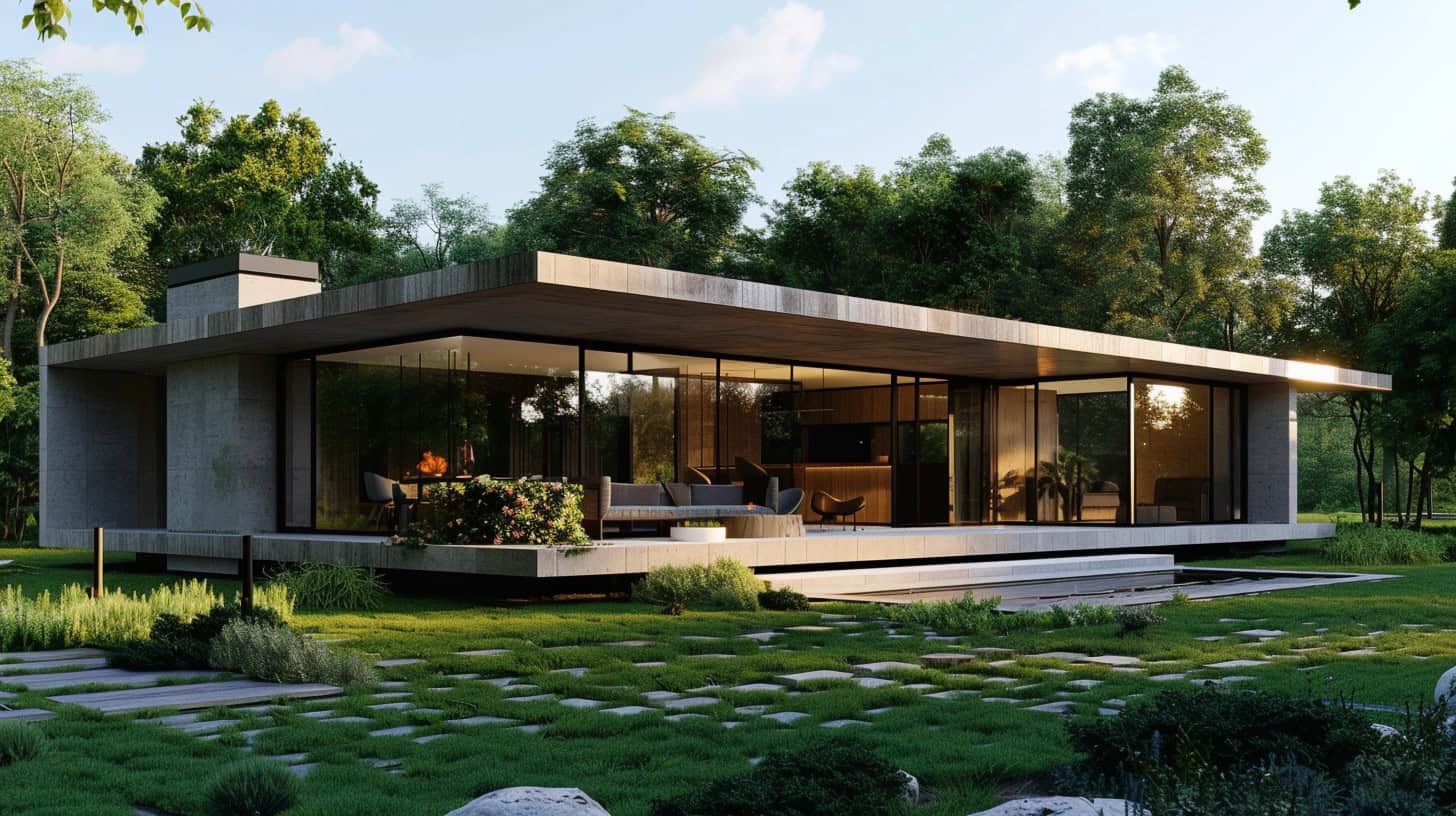Building a house costs more than buying one. In 2022, new homes averaged $644,750, while existing homes cost $535,500. 2 Yet, custom homes offer unique benefits. They’re tailored to your needs and often more energy-efficient, potentially saving money long-term. 3
I’ve guided hundreds of clients through the custom home building process. It’s complex but rewarding. New homes require less maintenance and have lower energy costs. 1 But they also come with challenges like longer wait times and unexpected expenses.
Let’s explore if building is right for you.
Key Takeaways
Building a house costs more upfront ($644,750 average) than buying an existing home ($535,500 average) but offers customization and energy efficiency benefits.
New homes require less maintenance and have lower energy costs, while existing homes provide immediate occupancy and established neighborhoods.
Construction typically takes 6–18 months, much longer than the 30-45 day closing period for existing homes.
Custom homes allow for personalized design and integration of energy-efficient features that can cut utility bills by up to 30%.
Buyers face potential risks with existing homes, including undisclosed repairs, outdated systems, and renovation costs for modernization.
Table of Contents
Advantages of Building a House
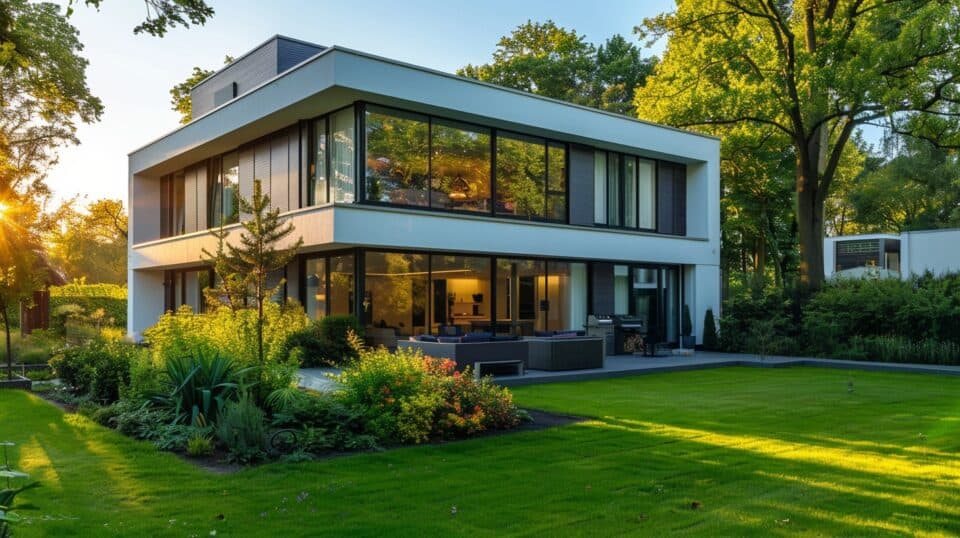
Building a house puts you in the driver’s seat. You’ll get exactly what you want – from layout to finishes.
Tailoring Design and Functionality
Custom homes offer unparalleled design freedom. Homeowners can shape every aspect – from room sizes to material choices. This level of personalization ensures the space perfectly fits their lifestyle and preferences. 1
A house is made of walls and beams; a home is built with love and dreams.
Energy efficiency becomes a priority in tailored designs. Smart HVAC systems, proper insulation, and energy-efficient appliances can be integrated seamlessly. These choices not only reduce utility bills but also increase the home’s long-term value.
Next, we’ll explore the challenges that come with building a house. 2
Integrating Energy-Efficient Solutions
Energy-efficient homes slash utility bills and boost property value. 3 Smart tech, solar panels, and eco-friendly appliances cut energy use by up to 30%. 4 These green features reduce greenhouse gas emissions, making your home kinder to the planet.
Builders now offer a range of options – from LED lighting to advanced insulation – that pay off in the long run. Your new energy-efficient house won’t just save money; it’ll be a comfortable, modern space you’ll love calling home.
Long-Term Financial Benefits
Building a new house offers significant financial advantages over time. Property values typically increase, especially in desirable locations. High-quality materials and modern construction techniques future-proof homes, boosting their worth. 5 Energy-efficient features like solar panels and smart thermostats reduce utility costs, saving homeowners’ money each month. 6
Customization allows for maximizing a property’s potential. Smart design choices can increase resale value substantially. Newer homes often require less maintenance, reducing long-term expenses.
Tax incentives for green building practices provide additional savings. The next section explores challenges in the home-building process.
Challenges of Building a House
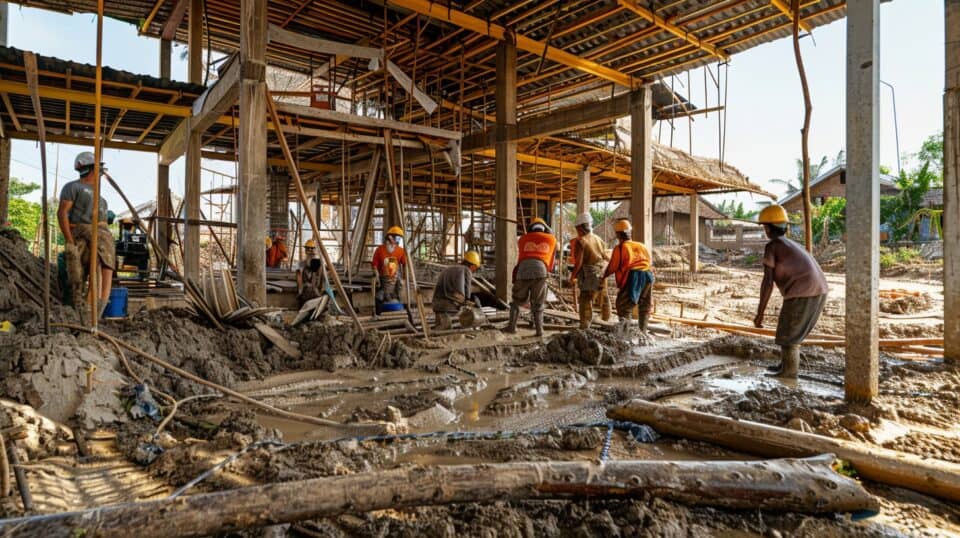
Building a house can be tough. You’ll face delays and unexpected costs.
Extended Timeframe Requirements
Time is a crucial factor in building a house. Construction typically spans 6 to 18 months, far exceeding the 30-45 day closing period for existing homes. 6 This extended timeline impacts various aspects of life, from temporary housing arrangements to financial planning.
Women often bear the brunt of managing these logistics, juggling work, family, and the stress of a long-term project.
Delays are common in construction, affecting budgets and schedules. Weather, supply chain issues, or contractor availability can extend timelines beyond initial estimates. The average seven-month build time doesn’t include planning and approval stages, which can add months to the process.
Homeowners must prepare for potential setbacks and have contingency plans in place. 7
Patience is not simply the ability to wait – it’s how we behave while we’re waiting. – Joyce Meyer
Initial Financial Burden
Building a house demands a hefty upfront investment. Construction costs average $644,750 – about $109,250 more than buying an existing home. 2 This price tag includes materials, labor, and land.
Homebuyers face significant out-of-pocket expenses before moving in. Construction loans often require larger down payments than traditional mortgages. Banks view these projects as riskier, leading to higher interest rates.
Women should budget for unexpected costs, as 1 in 3 builds exceed initial estimates. 8 Careful financial planning is crucial to avoid overextending resources during this process.
Financing options can ease the burden but come with trade-offs. Home equity lines of credit (HELOCs) offer flexibility, but use your current home as collateral. Construction-to-permanent loans simplify the process by converting to a mortgage after completion.
These choices impact long-term finances and require thorough consideration. Smart budgeting and exploring various lending options help manage the initial financial strain of building a dream home.
Navigating Legal and Regulatory Issues
Legal and regulatory hurdles can complicate house building. Zoning laws dictate land use – residential, commercial, industrial, or agricultural. 9 Permits ensure compliance with local building codes, safety standards, and land use regulations.
Homeowners face potential delays, complex paperwork, and changing regulations.
To navigate these challenges, consult a real estate attorney. They’ll guide you through zoning restrictions, permit applications, and compliance issues. Work closely with your architect and contractor to address regulatory requirements early in the design process.
This proactive approach helps avoid costly revisions and project delays. 8
Benefits of Buying an Existing Home
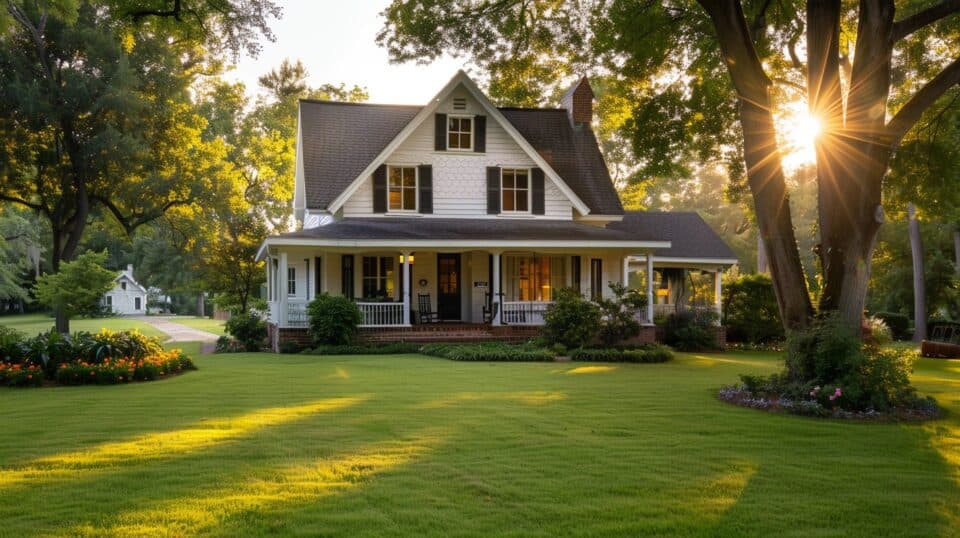
Existing homes offer instant gratification. You can move in right away, enjoy established neighborhoods, and often pay less upfront. Want to know more about the perks of buying a pre-owned house? Keep reading!
Immediate Access and Occupancy
Buying an existing home offers quick access to your new living space. You can move in right after closing, skipping lengthy construction delays. This instant occupancy lets you settle into your neighborhood immediately, start decorating, and make the space your own without waiting. 10
Existing homes come with established communities and amenities. You’ll enjoy ready-made parks, schools, and shopping areas from day one. For women juggling busy schedules, this convenience can be a major plus – no need to wait for infrastructure to catch up with your new build. 11
Settled Communities and Neighborhoods
Established neighborhoods offer a sense of community and stability. Families often choose these areas for their well-developed infrastructure, local amenities, and social networks.
Schools, parks, and community centers are typically in place, providing immediate access to essential services. These mature communities often have a distinct character and charm, with tree-lined streets and diverse architectural styles.
A house is made of walls and beams; a home is built with love and dreams.
Settled areas can also offer better resale value due to their proven desirability. 2 However, older neighborhoods may come with higher property taxes or homeowners association (HOA) fees.
The next consideration when buying an existing home is the potential for renovation and upgrade costs. 12
Lower Initial Costs
Existing homes often cost less upfront than new builds. In 2022, the average price for an existing home was $535,500. This lower initial investment appeals to many buyers, especially first-time homeowners.
It can mean smaller mortgage payments and reduced closing costs. 13
Buyers save about $6,000 by choosing an existing home over building new in the U.S. This difference stems from established infrastructure, no construction delays, and immediate move-in readiness.
Lower costs free up funds for renovations, allowing homeowners to personalize their space gradually. 6
Drawbacks of Purchasing an Existing Home
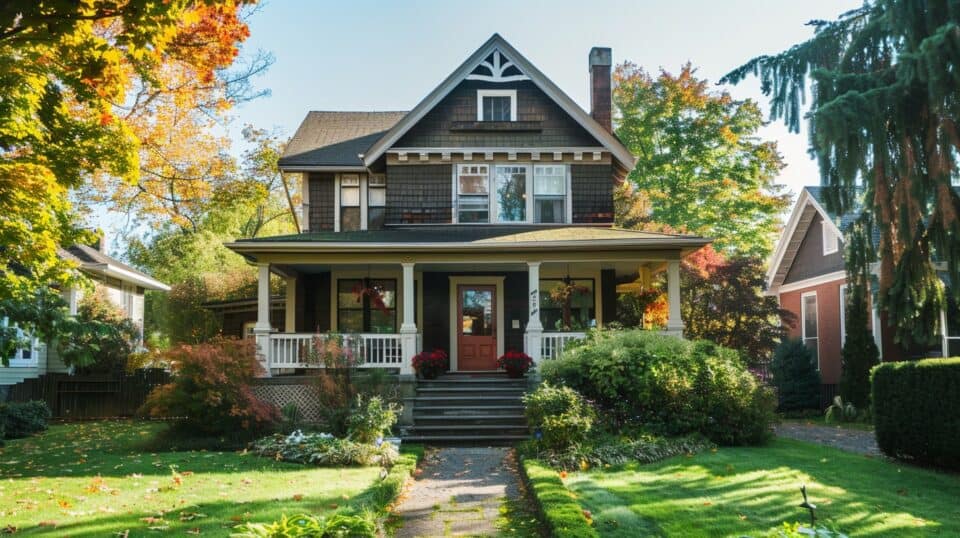
Buying an existing home can limit your options for customization. You might face unexpected costs for repairs or updates that weren’t obvious at first glance.
Constraints on Personalization
Existing homes often limit personal expression. Paint colors, flooring, and fixtures may clash with your style. Older layouts can feel outdated or impractical for modern living. Major renovations to customize spaces get costly fast. 6
A house is made of walls and beams; a home is built with love and dreams. – Unknown
Structural changes pose challenges in older properties. Load-bearing walls restrict open-concept designs. Outdated electrical systems complicate smart home upgrades. Historic designations may even prohibit exterior modifications, forcing compromises on curb appeal and energy efficiency. 2
Renovation and Upgrade Costs
[Constraints on personalization often lead to renovation and upgrade costs for existing homes. 6 Buyers face unexpected expenses when modifying outdated features or layouts. A new roof can cost $8,000-$20,000, while an HVAC system replacement ranges from $5,000-$10,000.
Kitchens and bathrooms typically require $10,000-$30,000 for modernization. These costs add up quickly, impacting budgets and timelines. 14].
Risks of Undisclosed Repairs
Beyond renovation costs, hidden issues lurk in existing homes. Undisclosed repairs pose significant risks to buyers. Home inspections often miss potential problems. Structural defects, outdated wiring, or plumbing issues can surface after purchase.
These unexpected repairs strain budgets and cause stress. 6
Sellers may conceal known issues to secure a sale. Water damage, mold growth, or pest infestations frequently go unreported. Discovery of these problems post-purchase leads to costly fixes.
Buyers face financial burdens and potential health hazards from undisclosed defects. Thorough inspections and seller disclosures help mitigate these risks. 15
Cost Comparison: Building versus Buying
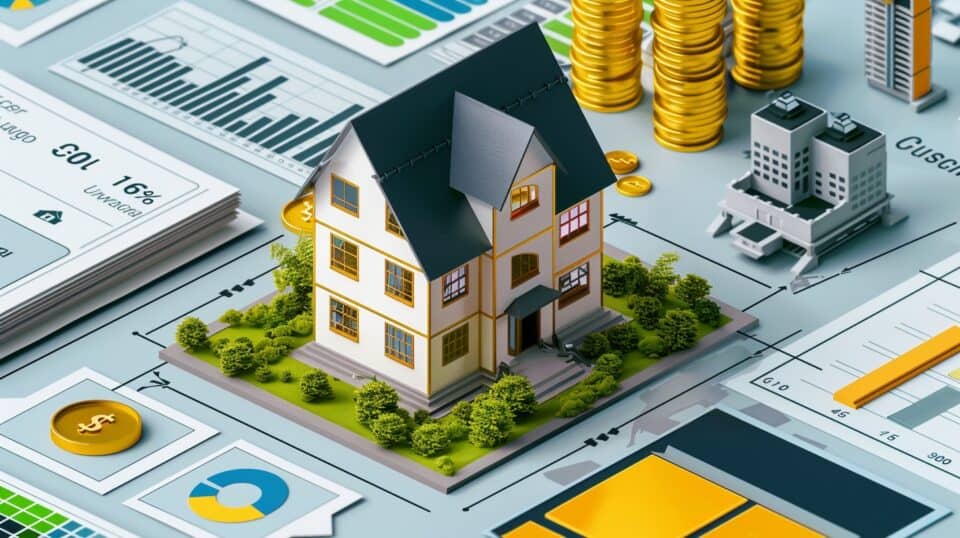
Building vs. buying a home isn’t just about upfront costs. Long-term expenses and value play a big role in this decision. A detailed look at both options can help you make the right choice for your wallet and lifestyle.
Analyzing Upfront and Ongoing Expenses
Upfront and ongoing costs play a crucial role in deciding between building and buying a home. A clear breakdown helps women make informed choices about their investment. 8
| Expense Type | Building a House | Buying an Existing Home |
|---|---|---|
| Initial Cost | $644,750 (average) | $535,500 (average) |
| Land Purchase | $3,000 – $150,000+ | Included in home price |
| Construction Materials | $45,000 – $200,000+ | N/A |
| Labor Costs | $15,000 – $80,000+ | N/A |
| Architect Fees | $2,000 – $20,000+ | N/A |
| Permit Fees | $1,000 – $7,000+ | N/A |
| Additional Costs | $20,000 – $100,000+ | Varies (renovations, upgrades) |
| Contingency Fund | 10-20% of total budget | N/A |
| Ongoing Expenses | Lower energy costs, minimal repairs | Higher energy costs, potential repairs |
Custom homes offer energy efficiency and lower maintenance costs. Existing homes may require immediate repairs or upgrades. The choice depends on budget, timeline, and personal preferences. 16
Evaluating Long-Term Value
Long-term value assessment is crucial when deciding between building or buying a house.
| Factor | Building a House | Buying Existing Home |
|---|---|---|
| Initial Cost | Higher ($420,700 median) | Lower ($379,100 median) |
| Appreciation | Significant in first years | 5.1% increase from 2023 |
| Energy Efficiency | Latest standards integrated | Varies, may need upgrades |
| Maintenance | Lower, newer systems | Higher, potential repairs |
| Customization | Full control of design | Limited, renovation needed |
Built homes offer lower maintenance costs. 17 New construction meets current energy codes. Custom designs increase resale value. 8 Existing homes provide immediate occupancy. Older properties may require updates. Market trends affect both options’ long-term value.
People Also Ask
Is building a house a good investment?
Building a house can be a solid investment. It offers customization, energy efficiency, and potential for appreciation. But beware – costs can spiral. The U.S. Census Bureau reports the average new home price is $428,700. Weigh pros and cons carefully.
How do I finance building a house?
Options abound: mortgage loans, lines of credit, or cash. Shop around – Rocket Mortgage, Bank of America, and Capital One offer competitive rates. Consider a construction-to-permanent loan. Remember, you’ll need a good credit score and possibly mortgage insurance.
What are the tax implications of building vs. buying?
Building can offer tax perks. Deduct mortgage interest, property taxes, and some energy-efficient upgrades. Buying? Similar benefits apply. Consult a tax pro for specifics. The National Association of Realtors notes homeowners save an average of $3,400 annually in taxes.
How much does it cost to build a house per square foot?
Costs vary wildly. The national average is $150 per square foot. But location matters – it’s $114 in the South, $155 in the Midwest. Factor in materials, labor, and land. Don’t forget extras like landscaping and appliances. Budget for overruns – 10-20% is smart.
What are common pitfalls when building a house?
Underestimating costs is #1. Others: permit delays, contractor issues, weather setbacks. Poor planning can lead to layout regrets. Skimping on materials might mean costly repairs later. Always get a home warranty. Read contracts carefully – hidden fees lurk.
How long does it take to build a house?
On average, 7 months for a single-family home. Custom builds? Up to 2 years. Factors include weather, permits, and contractor availability. Plan for delays. The housing shortage has stretched timelines. Be patient – rushing leads to mistakes and added costs.
References
- ^ https://www.modelo.io/damf/article/2023/12/14/1437/the-pros-and-cons-of-building-your-own-house (2023-12-14)
- ^ https://www.ramseysolutions.com/real-estate/building-a-house
- ^ https://www.researchgate.net/publication/366053945_Energy_Efficiency_in_Sustainable_Buildings_A_Systematic_Review_with_Taxonomy_Challenges_Motivations_Methodological_Aspects_Recommendations_and_Pathways_for_Future_Research (2024-05-18)
- ^ https://www.sciencedirect.com/science/article/pii/S2211467X22002073
- ^ https://medium.com/@david_91909/building-a-new-house-can-be-a-great-investment-28368660451
- ^ https://www.investopedia.com/articles/personal-finance/062614/should-you-buy-or-build-home.asp
- ^ https://www.finehomebuilding.com/forum/building-a-house-over-several-years
- ^ https://www.bankrate.com/real-estate/build-or-buy-a-house/ (2024-05-21)
- ^ https://www.linkedin.com/pulse/navigating-legal-regulatory-challenges-real-estate-development-y164f?trk=public_post
- ^ https://veraiconica.com/should-you-buy-or-build-a-home/ (2023-12-15)
- ^ https://www.linkedin.com/pulse/pros-cons-new-build-vs-established-homes-andrew-date-pi0be
- ^ https://www.bankrate.com/real-estate/new-construction-pros-and-cons/ (2024-01-16)
- ^ https://www.rocketmortgage.com/learn/building-a-house-vs-buying
- ^ https://www.ncbi.nlm.nih.gov/pmc/articles/PMC10001863/
- ^ https://www.araglegal.com/individuals/learning-center/topics/home-and-property/undisclosed-issues-when-buying-house
- ^ https://kitchenhomeandbath.com/build-or-buy-house/
- ^ https://www.architecturaldigest.com/story/is-it-cheaper-to-build-a-house (2022-12-21)
